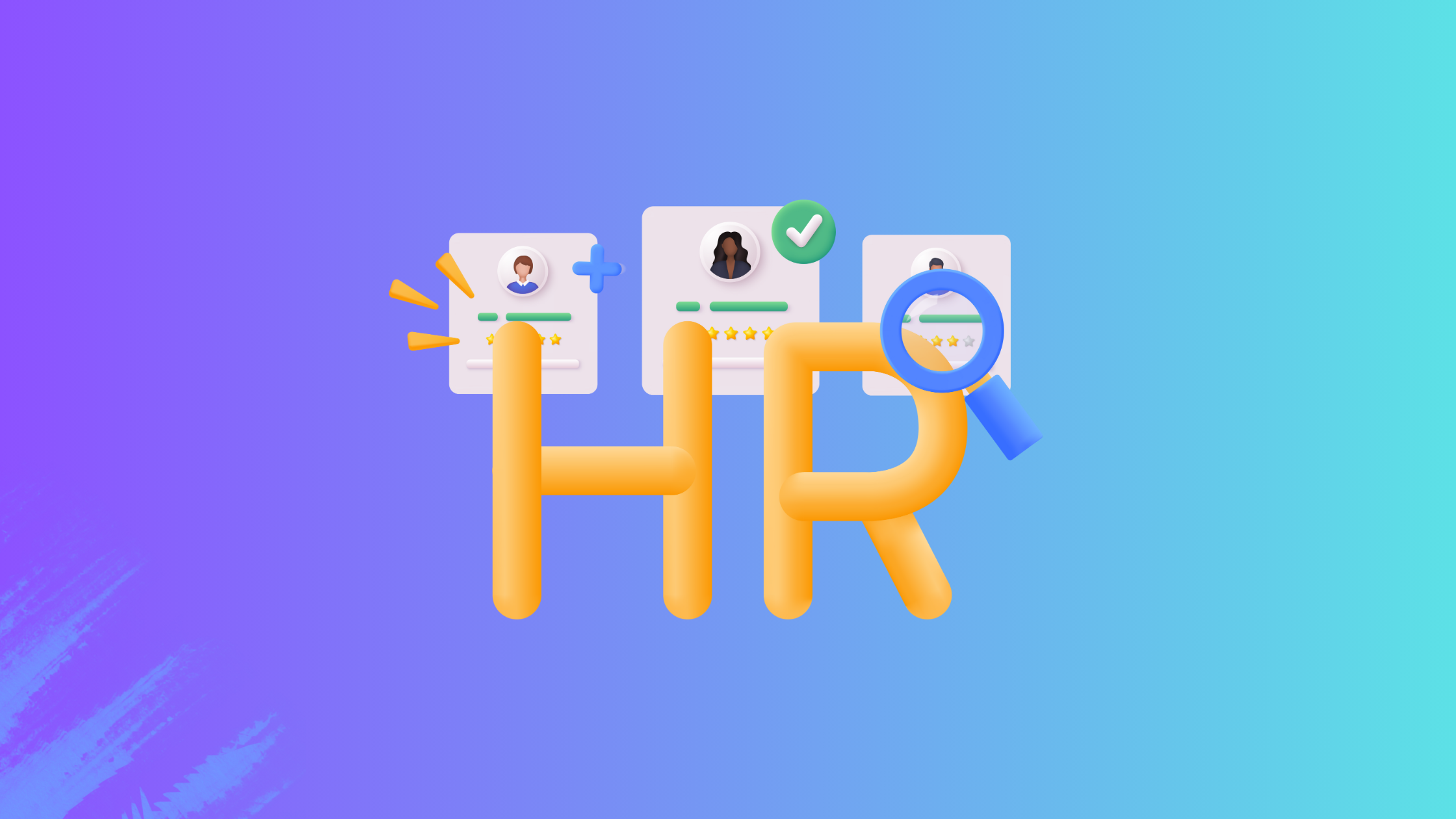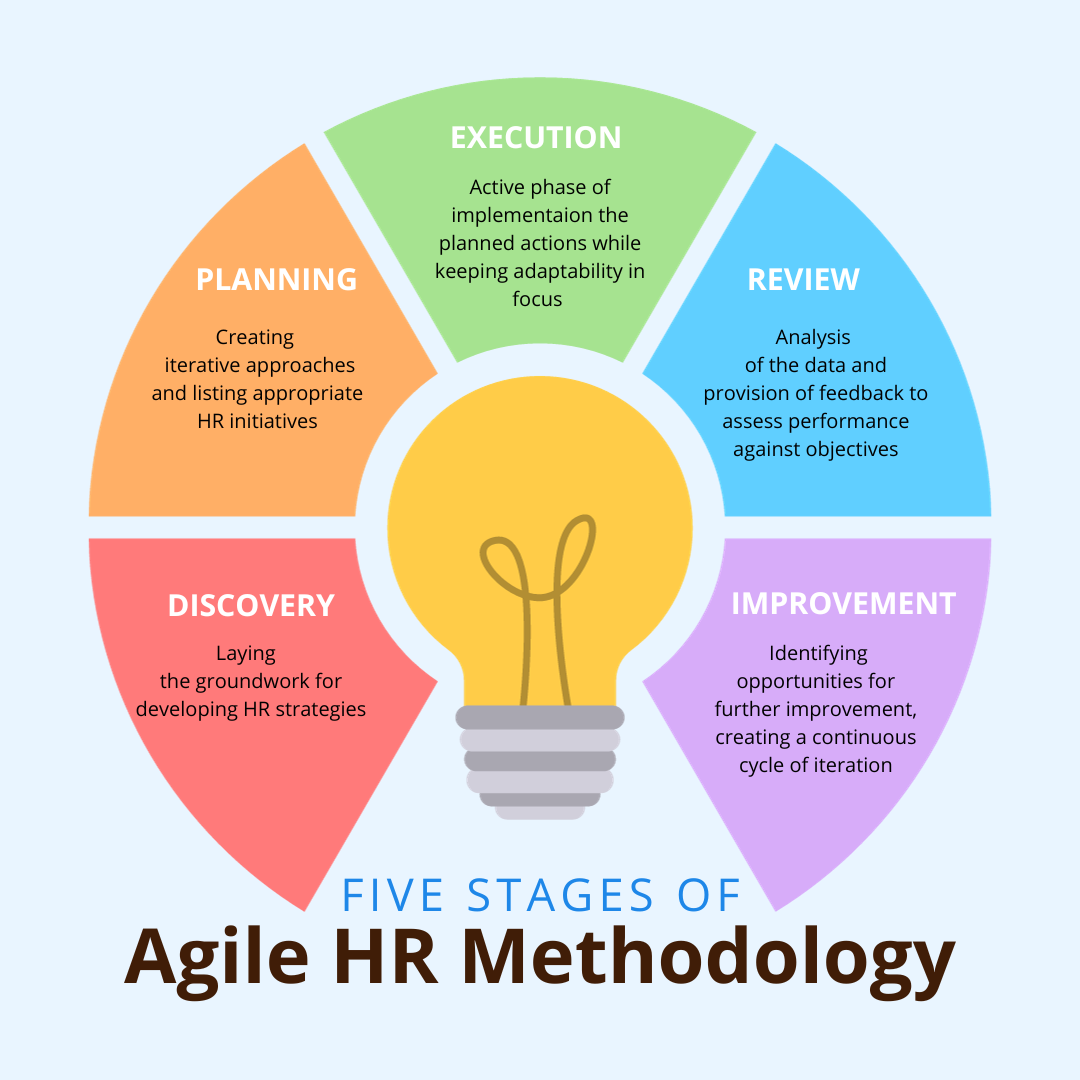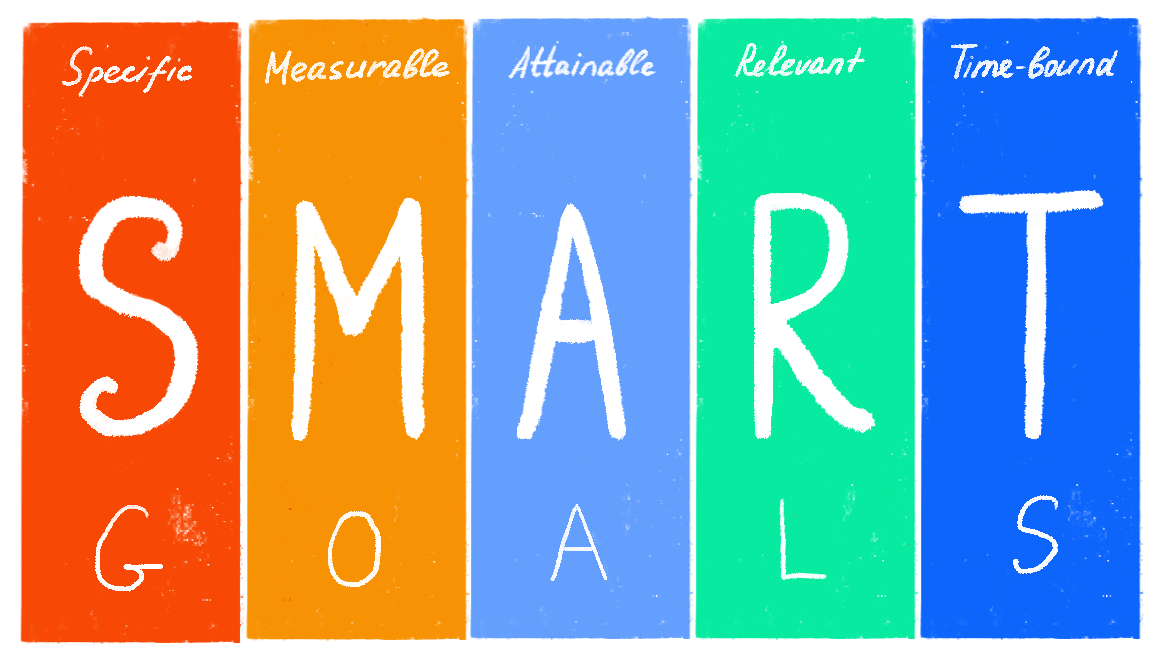10 Ways How to Implement Agile Working for HR
Learn 10 effective strategies of HR agile tracking and increasing the productivity of the team. Discover how you can change your HR department now!

The days when agile working was reserved only to tech teams are over. It is an effective strategy that can make human resource departments more reactive, agile, and effective.
What Is Agile In HR?
Agile HR is a fluid and teamwork-intensive style of human resource management that allows flexibility, innovation, and continuous development.
The conventional HR practices, which are guided by static targets and long-term strategies, are simply unable to address the issues of employers and staff in the contemporary workplace.
Though there is no actual battle between Agile and Waterfall approaches, the 'agilezation' is much more pronounced now.
As opposed to the old practices, Agile HR methods, derived from Agile software development methods, champion:
- iterative development
- openness to continuously adjustable targets and actions.
In addition, Agile HR helps:
- cut down hierarchies
- promotes a collaborative work culture.
This is particularly important in multinational settings, where team members and stakeholders could be dispersed across continents and time zones. Agile helps foster better communication and understanding among such distributed members.
Agile HR Methodology in Stages

The idea behind The Agile HR, as a methodology in human resources processes, suggests:
being people-centric
emphasizing on constant enhancement
prioritizing collaboration
embracing adaptability.
This is how it works step-wise.
Discovery
During the Discovery of Agile HR, the team gets into the thick of it regarding the needs and challenges, and goals of the organization.
By collecting information and feedback, they are creating a foundation towards coming up with HR strategies that are not rigid and not fixed to the organization, but flexible and open to the unique situation in the organization.
Planning
Agile HR involves the dynamism in planning where the HR teams will make flexible goals and design an iterative plan that will develop as the project requirements develop.
This method entails constant hand-in-hand work and feedback mechanisms in order to match the HR initiatives with the fluctuating needs of the organization.

Execution
This is where HR initiatives, which have been planned, would be executed, and there would be a high level of flexibility and sensitivity to change.
It is a constant survey and adjustment process and so the HR activities remain consonant with the changing reality of the organization.
Review
Revisiting the outcomes of the project, Agile HR meticulously analyzes the data and feedback to assess performance against objectives.
This reflective process is a cornerstone of Agile methodology, allowing the HR team to evaluate the efficacy of initiatives and pinpoint areas for refinement.
Improvement & Growth
In this phase, the HR team uses the information gathered from the evaluation phase to improve both the current project and the overall HR methods.
This stage involves actively seeking out opportunities for further improvement, creating a continuous cycle of iteration and progressive development in the project’s execution.
Benefits of Agile Working in HR

| HR Function | Agile Applications | Benefits |
|---|---|---|
| Performance Management | • Continuous feedback culture;• Flexible goal setting;• Real-time performance tracking;• Adaptable KPIs | • Enhanced employee engagement;• Improved performance outcomes;• More responsive goal alignment |
| Recruitment | • Iterative hiring processes;• Candidate feedback loops;• Faster hiring decisions;• Improved candidate experience | • Better talent alignment;• Reduced time-to-hire;• Enhanced candidate satisfaction |
| Learning; Development | • Personalized learning paths;• Adaptive training modules;• Scalable training solutions;• Continuous skill assessment | • Faster skill acquisition;• Improved knowledge retention;• More effective training programs |
| Employee Engagement | • Collaborative team practices;• Transparent communication;• Regular engagement surveys;• Cross-functional collaboration | • Stronger team cohesion;• Higher job satisfaction;• Reduced turnover rates;• Improved workplace culture |
| Workforce Planning | • Dynamic resource allocation;• Scenario-based planning;• Optimized workforce utilization;• Proactive risk management | • Improved forecasting accuracy;• Better resource optimization;• Enhanced workforce flexibility |
| Change Management | • Incremental change adoption;• Employee involvement in transitions;• Continuous change feedback;• Adaptive change strategies | • Reduced resistance to change;• Smoother transitions;• Higher adaptability;• Better change outcomes |
Talent Management: Agile HR would imply more dynamic talent management. Continuous performance reviews had the potential of replacing traditional yearly performance assessments that took a long time to be implemented with the employee to provide faster feedback and personal growth.
Recruitment: Agile HR would introduce the idea of an iterative recruitment cycle and feedback loop in the recruitment process to make it more process-responsive and adaptive to organizational shifts.
Employee Well-being: Employee well-being might be monitored in real-time to have faster responses to situations and a balanced work-life environment to resulting in good employee morale and increased productivity.
Training and Development: Through agile HR can develop more flexible and customized training that will reflect the dynamic needs of a company and the needs of the employees at any given time.
Decision-making: As support was being decentralized, a lot of decisions that were considered the exclusive jurisdiction of HR could now be viewed in collaboration, and the stakeholders could provide their input.
Factuality: To a great extent, agile HR would be more fact-based and would use analytics not only in measuring performance but would also use it to predict employee behaviors and attrition rate, not based on assumptions and guesses.
Remote Work: The agile model is very flexible and will work well in remote and hybrid work environments, which are also becoming mainstream.
Compliance and Governance: Despite the stress on the flexibility of agile, that does not imply that it is unstructured. Agile HR would still be required to be compliant, albeit in a manner that is flexible to the ever-evolving laws and regulations.
Employee Engagement: Engaged employees lead to effective and successful agile practices that involve a sense of ownership or involvement in decision-making.
Improved productivity: Agile working can also increase productivity in the HR department as well as avoid any kind of unwanted redundancy in the procedures.
Agile HR Best Practices

Agile methodologies prioritize adaptability and responsiveness through incremental and iterative work cadences.
When integrated into HR, these methodologies have the potential to modernize HR functions, making them more responsive, employee-centric, and data-driven.
Build Employee-Centered Systems
Action: Incorporate feedback mechanisms at every stage of HR processes, ensuring they are tailored to employee needs.
Advantage: Creates an environment where employees feel valued and heard, improving job satisfaction and retention.
Use Iterative Feedback Loops
Action: Implement regular check-ins and feedback sessions rather than annual performance reviews.
Advantage: Allows for real-time performance adjustments, employee growth, and more timely recognition.
Develop Cross-Functional HR Teams
Action: Form diverse HR teams with members from various departments to address specific organizational challenges.
Advantage: Brings a holistic view to problem-solving, ensuring all angles are considered.
Implement Data-Driven Decision Making
Action: Leverage analytics tools to continuously monitor and evaluate HR processes, making adjustments based on data.
Advantage: Decisions are based on evidence, leading to more efficient and effective HR strategies.
Promote Continuous Learning & Development
Action: Develop a culture of continuous learning by providing regular training, workshops, and opportunities for upskilling.
Advantage: Ensures that the workforce remains competitive, adaptable, and ready for future challenges.
Define Roles with Flexibility
Action: Allow roles to be dynamic, changing based on project needs and employee skillsets.
Advantage: Boosts employee engagement, as they can work on projects aligning with their interests and expertise.
Atomize Goal Setting
Action: Shift from long-term goal setting to shorter, more achievable sprints aligned with business objectives.
Advantage: Keeps teams focused and motivated, with a clear line of sight on immediate objectives.
Encourage Transparent Communication
Action: Use platforms and tools that promote open communication across all levels of the organization.
Advantage: Fosters trust, breaks down silos, and keeps everyone informed of organizational changes.
Embrace Change & Adaptability
Action: Encourage an organizational mindset that views change as an opportunity, not a threat.
Advantage: Makes the organization resilient to external shocks and better positioned to seize new opportunities.
Prioritize Employee Wellbeing
Action: Implement wellbeing programs and regularly gather feedback to ensure they meet employee needs.
Advantage: Enhances employee health and productivity, leading to a happier, more engaged workforce.
Incorporating these Agile practices into HR can lead to a more adaptive, efficient, and employee-centric HR department, better positioned to support an organization's evolving needs.
Agile HR Tools

Atlassian Jira for Sprint Planning
Originally designed for agile software development, Jira can also be adapted for HR teams. It allows for creating user stories, planning sprints, and distributing tasks across the team.
It is one of the best tools for sprint planning in HR as it ideally offers features that support task prioritization, collaboration, and breaking down HR tasks into manageable chunks, which can be handled in 2-4 weeks sprints.
Microsoft Teams for Streaming Communication
A part of the Office 365 suite, Teams is robust for video conferencing and instant messaging and integrates deeply with other Microsoft products, which can be beneficial for organizations already in the Microsoft ecosystem.
It encourages a continuous stream of dialogue rather than formal, spaced-out meetings.
BambooHR for Flexible HR Policies
This HR software is well-regarded for its ability to streamline data and processes, allowing for easy access to information and simplifying HR tasks, which can be particularly beneficial for supporting flexible working arrangements.
It helps adapt and revise HR policies that encourage agility and flexibility.
TMetric for Employee-Centric Design
TMetric is a time tracking tool that can be effectively integrated into an Agile HR framework, especially when taking an employee-centric approach. It allows to shift focus onto employees and create processes that prioritize employee needs.
Aside from accurate time tracking, it brings HR an instant result when they are in need of productivity analysis and employee performance evaluation.
TMetric also contributes to performance management agility by aggregating data that make performance evaluation processes quicker, more assertive, and more reflective of agile operations.
Asana for Encouraged Collaboration
Asana is a work management platform that helps teams coordinate and manage their work. HR teams can use it to track the progress of recruitment, onboarding, and employee development initiatives.
It ensures cooperation and active participation across teams.
LinkedIn Learning for Endorsing Continuous Learning
This platform provides a wide array of professional development courses that can be integrated into an HR system for employee learning.
It covers various topics that can be aligned with individual learning paths and organizational goals and promotes a culture of continued professional growth and development.
Agile In HR Examples

Pillars of Agile including iterative development, continuous improvement, cross-functional collaboration are also being incorporated in HR to increase flexibility, efficiency and worker satisfaction.
These are some of the hints of Agile in HR.
Recruitment and onboarding
Agile HR units can utilize iterative cycles to perfect the hiring process, continuously receiving input not only on job descriptions, interview questions and onboarding process, but also on the expectations of applicants and the hiring managers.
Hiring could be a cross-functional activity with as well the HR as the team members representing the department where the hired person would work involved becoming a good fit and a balanced assessment outcome.
Performance Management
Agile HR may replace annual employee-manager reviews with more frequent and less structured meetings in which to talk about goals, performance, and development to reflect Agile focus on checking in regularly and iterating.
It is possible to establish goals and objectives more frequently (every quarter or even month), and they might be changed depending on the needs of the company or progress according to personal development.
Learning and Development
HR functions can also employ Agile to create training programs and restrict the training needs into small and manageable chunks that could be rapidly planned, rolled out, and improved as responses made by employees.
It is also possible to run pairing and sharing sessions, where employees will be put into pairs and are expected to teach each other, which will encourage collaborative learning.
The learning and development efforts can be agileized by utilising a more learn-based and iterative process. This can be done by axing training programs into small modules, adding feedback loops and using technology to provide learning materials in a flexible and convenient way.
Project-Based Work
- HR projects, such as implementing a new HRIS (Human Resources Information System) or creating a diversity and inclusion initiative, can be managed using Agile project management techniques, breaking the project into phases, or "sprints," with each phase having its own planning, execution, and review stages.
- Agile project management principles, such as Scrum or Kanban, can be applied to HR projects to improve collaboration, prioritize work, and deliver value incrementally. This approach involves regularly reviewing progress to adapt and adjust as needed.
Employee Engagement
- Agile HR might use sprint retrospectives to discuss and improve engagement, looking at what has worked well and what hasn’t, similar to how Agile software teams review their development sprints.
- Employee surveys could be conducted more frequently with a focus on actioning feedback quickly, embodying the Agile value of responding to change over following a set plan.
- Agile performance management involves regular check-ins, goal setting, and feedback loops to enable employees and managers to adapt and improve performance in real time.
Cross-Functional Collaboration
- HR may facilitate the creation of cross-functional teams for company-wide initiatives, promoting collaboration between departments and leveraging diverse skill sets to tackle complex problems.
- Agile HR roles, such as Agile Coaches or Scrum Masters, might be introduced to support teams in adopting Agile practices.
- Collaboration between Human Resources (HR) and project managers can streamline the recruitment process, making it more productive and successful in attracting top talent.
Agile HR in a Nutshell

Agile HR and "traditional" HR do have some similarities, such as focusing on attracting and retaining talent, managing performance, and creating a positive work culture.
However, the difference lies in the approach. Agile HR is all about being adaptable, embracing change, and responding to the evolving needs of employees and the business.
Traditional HR, on the other hand, tends to be more rigid and process-driven, with less room for flexibility.
Adopting agile working methods is not just a change in process; it's a change in culture and mindset.
As HR departments are integral to organizational success, their adoption of agile working methods can have far-reaching impacts.
Hence, Agile working can be seen as a future-forward approach aligned with the rapid pace of technological and social change.

